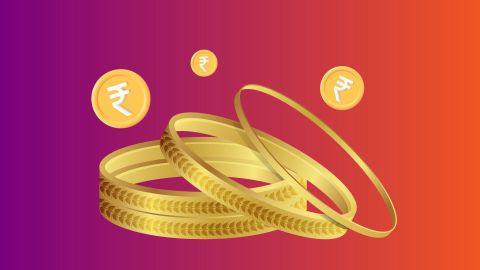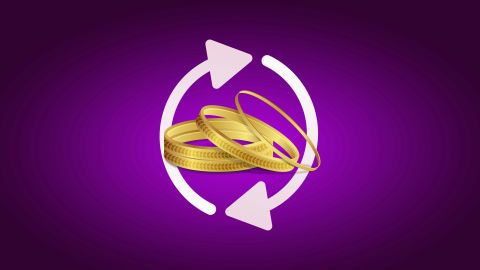Purifying gold to a higher grade, especially from already refined gold, is a delicate process. When gold needs to be purified further, additional refining processes are applied to remove any remaining impurities. One such method is the Wohlwill process, which uses electrolysis to improve purity levels to as high as 99.99%. This method is particularly useful for refining gold to a higher grade from already pure gold. Another method is chlorination, where chlorine gas is passed through molten gold to separate out any remaining base metals or other contaminants. The gas reacts with impurities, which can then be skimmed off. Gold that has been purified to a high grade is softer and more malleable, often making it ideal for use in investment-grade bullion, jewellery, and other high-value applications.
Methods to refine gold from 14k to 24k
Refining gold from 14k to 24k involves removing the other metals present in the alloy. 14k gold contains about 58.5% pure gold, with the remainder made up of base metals like copper, nickel, or silver. To refine this gold, aqua regia is commonly used, where the alloy is dissolved in the acid mixture, and the gold is precipitated out using a reducing agent. Cupellation is another method, where the gold alloy is heated to a high temperature in a furnace, causing the base metals to oxidise and separate from the gold. After the refining process, the gold is often tested to ensure it has reached 24k purity, the highest possible grade, before being cast into bars or shaped into jewellery. This process significantly increases the value of the gold.
Techniques to purify gold from scrap
Purifying gold from scrap involves extracting gold from old jewellery, electronics, or other gold-containing items. The first step is to separate the gold from other materials through processes such as acid treatment or melting. For electronic scrap, the gold is dissolved using aqua regia or another chemical agent. Once dissolved, the gold is filtered, and a precipitating agent like sodium metabisulphite is added to recover the gold. For jewellery scrap, cupellation is often used, where the gold is melted and heated in a furnace to remove impurities. After purification, the gold is refined further using electrolysis or other chemical treatments to achieve a higher purity, making it suitable for resale or reinvestment.
Why does gold need to be refined?
Gold needs to be refined to ensure its purity and enhance its value. Raw gold often contains impurities such as silver, copper, and other base metals, which can reduce its market worth. Refining eliminates these impurities, resulting in gold that is 99.5% pure or higher. This pure gold is highly sought after for investment purposes, jewellery, and industrial applications. Moreover, refining gold ensures that it meets international standards, particularly important when using gold as a form of collateral for loans or trading on the global market. By refining gold, its true value can be accurately assessed, providing a fair valuation for buyers, sellers, and lenders alike.
How raw gold is found and refined?
Raw gold is typically found in natural deposits such as rivers, streams, or deep within the earth's crust. It is often extracted through mining operations, including placer mining, where gold is sifted from river sediments, or hard rock mining, where veins of gold are blasted from underground. Once extracted, raw gold contains a variety of impurities, including other metals and minerals. To refine it, the gold is first melted and treated with chemicals like nitric acid or chlorine gas, which remove the impurities. Smelting is another method, where the gold is heated to high temperatures, and the base metals are separated. The final result is purified gold, ready for commercial use or further refining into bullion or jewellery.
How to extract pure gold from scrap materials?
Extracting pure gold from scrap materials involves various chemical and mechanical processes. For gold-bearing electronics, the scrap is first dissolved using aqua regia or cyanide solutions, separating the gold from other materials. The dissolved gold is then precipitated out using a reducing agent, like sodium metabisulphite, and refined further if necessary. Another method, often used for jewellery scrap, involves cupellation, where the scrap is melted at high temperatures to separate the gold from base metals. The remaining gold is collected and refined further using electrolysis or chlorination, depending on the required level of purity. This purified gold is then either sold, reused in new jewellery, or stored as an investment.
Gold refining and its role in gold loan valuation
Gold refining plays a crucial role in determining the value of gold when used as collateral for loans. Lenders require gold to be of a certain purity to assess its true value accurately. Gold that has been refined to a higher purity, such as 24k, fetches a higher valuation compared to lower-purity gold. In the context of gold loans, the lender typically tests the purity of the gold offered as collateral before determining the loan amount. The more refined and pure the gold, the higher its market value, which directly impacts the loan valuation. By ensuring the highest possible purity, borrowers can secure a higher loan amount.
How does gold refining affect the gold loan amount?
The purity of gold is one of the most important factors that affect the amount of a gold loan. Banks and financial institutions typically assess the purity of the gold before determining its market value and the loan amount they are willing to offer. Gold refined to 24k purity commands a higher value than gold that is only 18k or 14k. When a borrower presents refined gold with minimal impurities, it allows lenders to offer a more favourable loan-to-value (LTV) ratio. Conversely, gold with impurities or of lower purity will reduce the loan amount. Therefore, having well-refined gold ensures the borrower can access a higher loan amount.
Refining gold for the maximum loan value
To maximise the loan value, refining gold to its purest form is essential. Lenders determine the value of the gold based on its purity, and the higher the purity, the better the loan terms. For instance, gold that has been refined to 24k purity is worth significantly more than gold with impurities. To achieve maximum loan value, borrowers often refine their gold using methods like electrolysis or chlorination to ensure minimal contamination. Once refined, the gold is assessed by the lender's experts, who will calculate its worth before approving the loan amount. The higher the purity of the gold, the more favourable the
gold loan terms are likely to be.
The connection between gold refining and loan amount per gram
There is a direct connection between the degree of gold refining and the loan amount offered per gram of gold. Lenders assess gold based on its purity, with 24k gold fetching the highest price per gram. Gold that has undergone thorough refining processes is more valuable because it contains fewer impurities. The purer the gold, the higher the loan amount that can be secured per gram. 24 karat gold, being nearly 100% pure, is soft and easily scratched, making it less suitable for durable jewellery. Instead, 18-22 karat gold, which includes other metals for added strength, is commonly used in jewellery crafting. For those looking to leverage their gold assets, Bajaj Finance offers loans against 18-22 karat gold jewellery, providing a practical financing option while retaining ownership of precious items. This approach ensures both high-quality gold and lasting wearability in jewellery, making it ideal collateral for loans. As a result, borrowers who present highly refined gold can expect a more favourable loan amount, allowing them to access more funds.






